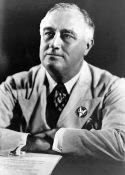
Benjamin Shepard and Gregory Smithsimon, The Beach Beneath the Streets: Contesting New York City's Public Spaces (Albany, NY: SUNY Press, 2011).
from the publisher:
Focusing on the liberating promise of public space, The Beach Beneath the Streets examines the activist struggles of communities in New York City—queer youth of color, gardeners, cyclists, and anti-gentrification activists—as they transform streets, piers, and vacant lots into everyday sites for autonomy, imagination, identity formation, creativity, problem solving, and even democratic renewal. Through ethnographic accounts of contests over New York City’s public spaces that highlight the tension between resistance and repression, Benjamin Shepard and Gregory Smithsimon identify how changes in the control of public spaces—parks, street corners, and plazas—have reliably foreshadowed elites’ shifting designs on the city at large. With an innovative taxonomy of public space, the authors frame the ways spaces as diverse as gated enclaves, luxury shopping malls, collapsing piers, and street protests can be understood in relation to one another. Synthesizing the fifty-year history of New York’s neoliberal transformation and the social movements which have opposed the process, The Beach Beneath the Streets captures the dynamics at work in the ongoing shaping of urban spaces into places of repression, expression, control, and creativity.























